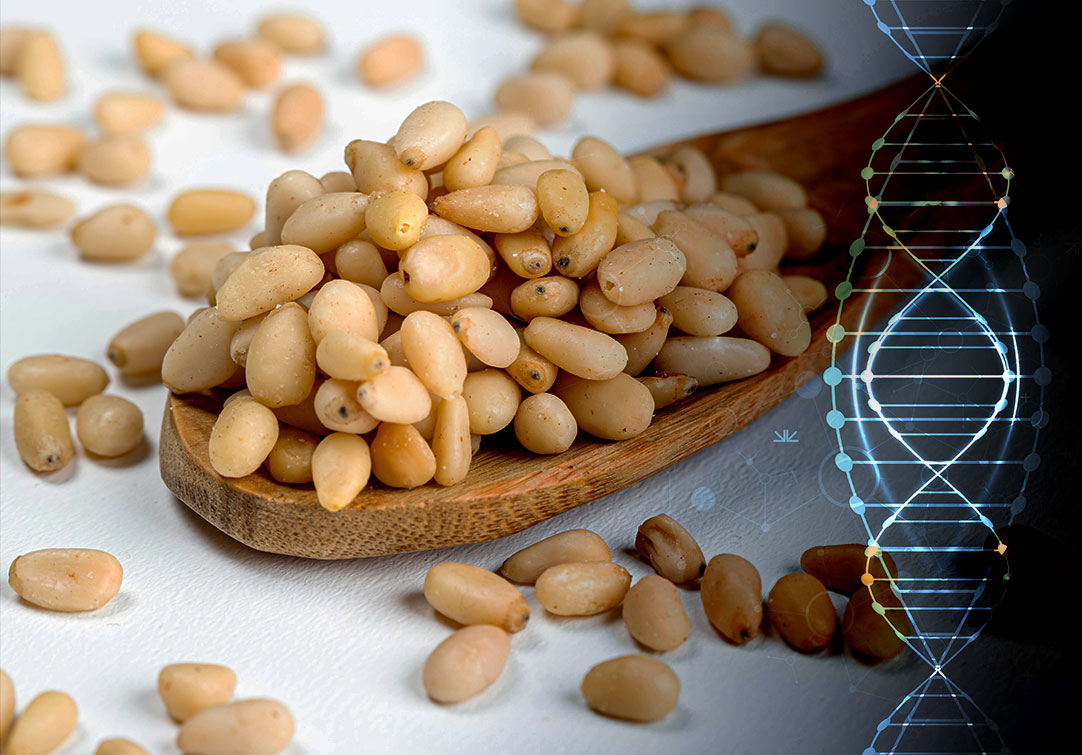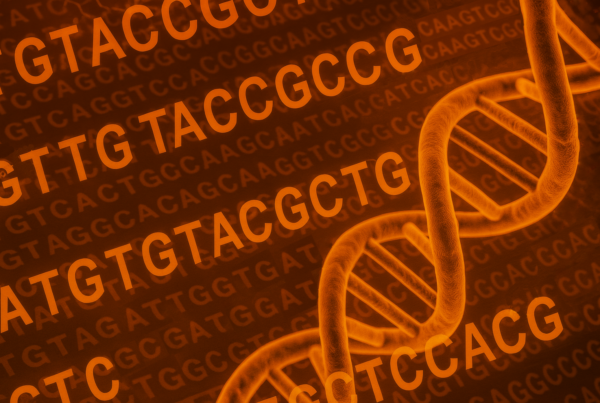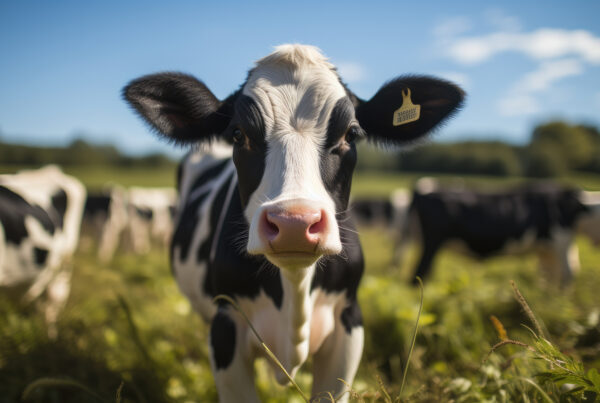Image of wooden spoon with pine nuts by Marco Verch | from: https://ccnull.de/foto/wooden-spoon-with-pine-nuts-on-a-white-background/1026049 | DNA helix was added on right hand side | CC-BY 2.0
Have you ever had a “bad” pine nut that ruined your meal? Did you have a strange taste lingering on for days or for weeks? If yes, then don’t blame the pine nut! Some pine nut species are simply not meant for human consumption, but many consumers are simply not aware about that. We are here to debunk the pine nut world for you.
As a quick summary, Pinus koraiensis, P. sibirica, P. yunnanensis, P. griffithii and P. pumila. are all applicable for consumption. P. armandii, P. massoniana and P. tabulaeformis are not. Pinus armandii is the pine nut believed to cause dysgeusia (taste distortion) among consumers.
Therefore, how can you test whether you are buying or selling the right pine nut species? A reliable testing method now exists and is based on DNA analysis.
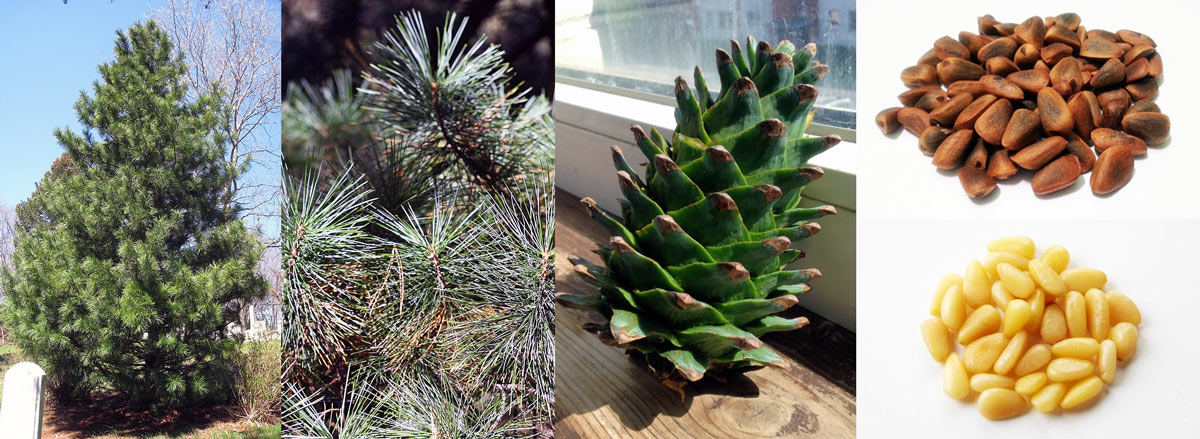
Image 1: Pinus koraiensis, from left to right: cone, branch, pine seeds and kernels
Pine nuts DNA testing – How it works
DNA-based methods are becoming more and more standard in the industry. They are routinely applied for example to the identification of GMOs (genetically modified organisms), of pathogens in production or in food products, of allergens, and for the identification of the wide variety of fungal, microbial, animal and plant species used in food production. As such, these methods can also be very helpful to combat food fraud or other deceptive practices.
For pine nuts, we mainly receive requests based on the absence of certain species or the replacement of more expensive ones – mainly for the absence of Pinus armandii (which causes the metallic taste that can last for weeks) or for the replacement of Pinus pinea (the most expensive pine nut) by Pinus gerardiana (when bleached).
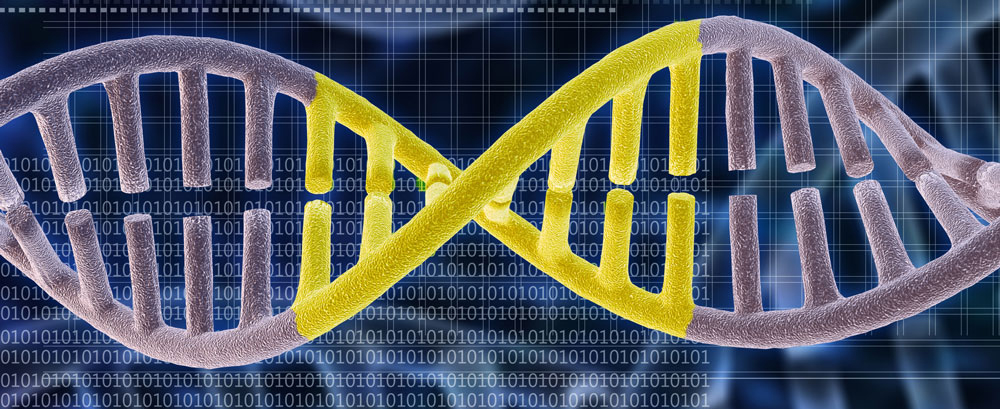
The DNA method analyses known sequence differences (DNA markers) that have been identified between the varied species. Those DNA markers were originally found through comparing sequences that differed between, but not within, the species. The challenge of this endeavor originally was to find reliable and variable DNA markers that make a discrimination between edible and inedible species possible. Reference material of known origin for the dozens of different pine nut species from across Asia, Europe and North America were gathered and analyzed. The outcome of that was a DNA based method that can differentiate between the pine species with 8 regions in 7 genes found to be variable.

Image 2: Pinus armandii, from left to right: cone, branch, pine seeds and kernels.

Image 3: From left to right: pine kernels of Pinus massoniana, Pinus sibirica and Pinus gerardiana.
Pine nuts DNA analysis – Conclusion
Reliable, independent and trusted testing methods are necessary to help consumers make the most informed and safe decisions when it comes to their food. DNA based methods are strong tools that can be used to do just that. In addition to pine nuts, there are numerous high-quality varieties of wheat, spices and other food products that can be tested using DNA. As an example, another such developed method helps differentiate between various varieties of Basmati rice. There are adulterations that can sometimes occur with common long grain rice, which can be less than half the price of Basmati.
If you are interested in learning more about our pine nut analysis, or about other ways in which DNA testing can support food authenticity testing, then please get in touch via our DNA Food Testing website.
By Antonina Constantine
Did you like this article about DNA testing for food identification? Then subscribe to our Newsletter and we will keep you informed about our next blog posts. Subscribe to the Eurofins Genomics Newsletter.


